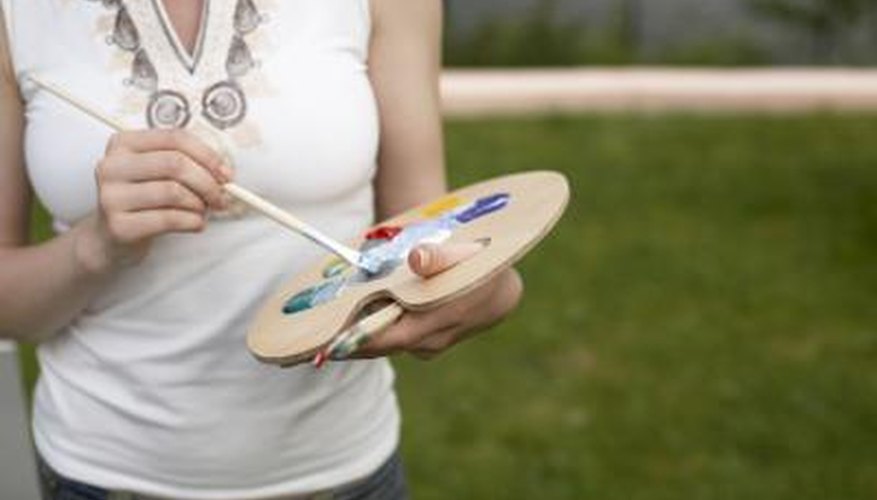The colour wheel gives a visual reference to colours and offers guidance on combining them. A rainbow made by light through a prism also represents a range of colours and their relationships. In painting, the primary colours are red, blue and yellow. Combining the primary colours results in secondary colours. On a basic colour wheel, you see the secondary colours between the two primary colours you mix to make each secondary colour. Your mixed colour depends upon the amount of each colour and how dark or light each colour is. To mix magenta requires red and light blue.
- The colour wheel gives a visual reference to colours and offers guidance on combining them.
- A rainbow made by light through a prism also represents a range of colours and their relationships.
Squeeze red paint onto a palette, or apply it to the palette with your brush if you're using watercolours. Start with a little more than you think you'll need for the area you're painting to avoid the risk of running out and having difficulty matching the colour.
Blend the red and light blue paint together. Add more light blue if needed to achieve the desired shade of magenta.
Create a highlight shade of magenta by adding a little white to one side of the magenta paint on the palette. Use this to show where light hits a magenta object and give depth to the magenta on the painting.
TIP
If you don't have light blue paint, use the blue you have and add a small amount of white paint to lighten the colour until you reach the shade of magenta you want. Your magenta paint may appear lighter when it dries. Wet paint tends to have a deeper colour than dry paint, although the effect varies depending on the type of paint you're using. With water colours, using less water gives you a more saturated magenta. With tempura, acrylic and oils, you can get a darker magenta by applying a thicker brushstroke rather than a delicate brush stroke.
